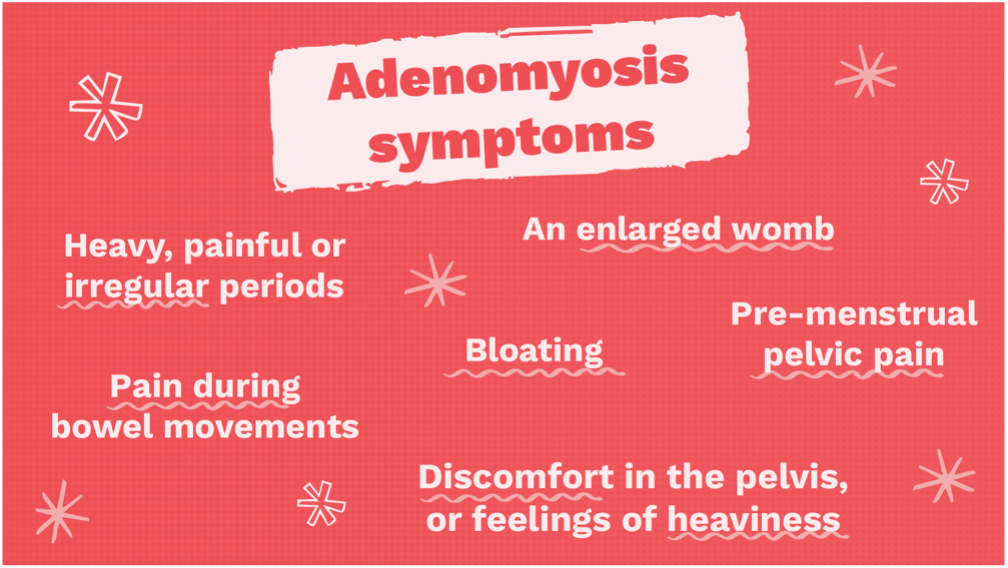
What is adenomyosis?
What is Adenomyosis?
Adenomyosis happens when uterine tissue grows into the muscle wall of the uterus.[1]
These cells grow, break down and bleed during each period, which can cause heavy, painful, or irregular bleeding. Adenomyosis is thought to affect around 1 in 10 women in the UK.[2]
It is possible to have adenomyosis and not experience any symptoms, however, if you do, they may include:

- Heavy, painful, or irregular periods
- Pre-menstrual pelvic pain
- Discomfort in the pelvis, or feelings of heaviness
- Bloating
- Pain during sex
- Pain during bowel movements
- An enlarged womb
These symptoms can be similar to those experienced when suffering from endometriosis or fibroids, but adenomyosis is a different condition to both.[2]
Diagnosing Adenomyosis
Your doctor will carry out a pelvis examination, looking at your vulva, vagina, and cervix to see if there is something that could be causing these symptoms. Sometimes, other tests may be required, and your doctor will discuss the next steps during your appointment. This could include being referred to a specialist and having an ultrasound or an MRI.[3]
How to Treat Adenomyosis
Unfortunately, there is no cure, however, there are treatments to help ease symptoms.
Treatments for adenomyosis are similar and cross over to menorrhagia treatments and include NSAIDs, tranexamic acid, contraceptives, hysterectomy, or uterine artery embolization. It is recommended to speak to your doctor to find out what is most suitable for your symptoms.[4]
Read more on the Wellbeing of Women.
Be Bloody Confident

Be Bloody Confident aims to raise awareness about HMB and give those suffering the confidence to speak out and seek treatment. Support is available and is there to help you take back control of your periods.
 Learn more about Treating Heavy Periods and explore our free resources to help track your menstrual cycle and symptoms.
Learn more about Treating Heavy Periods and explore our free resources to help track your menstrual cycle and symptoms.
References:
[1] – Schrager, S., Yogendran, L., Marquez, C.M. and Sadowski, E.A. (2022). Adenomyosis: Diagnosis and Management. American Family Physician, [online] 105(1), pp.33–38. Available at: https://pubmed.ncbi.nlm.nih.gov/35029928/#:~:text=Adenomyosis%20is%20a%20clinical%20condition [Accessed 5 Jun. 2023].
[2] – Wellbeing of Women. (2022). What is adenomyosis? [online] Available at: https://www.wellbeingofwomen.org.uk/what-we-do/health-information/health-information-a-z/what-is-adenomyosis/.
[3] – www.nhsinform.scot. (n.d.). Adenomyosis. [online] Available at: https://www.nhsinform.scot/healthy-living/womens-health/girls-and-young-women-puberty-to-around-25/periods-and-menstrual-health/adenomyosis#:~:text=Adenomyosis%20is%20a%20condition%20that.
[4] www.nbt.nhs.uk. (n.d.). Adenomyosis | North Bristol NHS Trust. [online] Available at: https://www.nbt.nhs.uk/our-services/a-z-services/gynaecology/adenomyosis.




